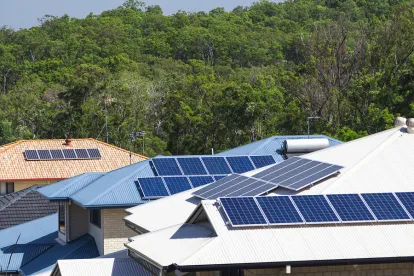The long-awaited amendment to the Renewable Energy Sources Act (RES) is now in effect.
Before the holiday season, on June 29, 2018, the President signed into law the long-awaited amendment to the RES. It was published later that day (fast track), thus the provisions regarding RES installation were effective as of July 1, 2018, with the remainder taking effect, generally, on July 14, 2018.
The first trigger for introducing the amendments was the need to execute the European Commission Decision conditionally allowing the Polish auction-based model of supporting RES. While at it, certain previously flawed provisions were fixed and several new solutions were added.
Depending on the point of view, the outlooks vary. Generally, it seems that the amendment is beneficial to renewable energy producers, yet there is still a lot to be desired in the long run.
A Step Forward, a Step Back – Clear Taxation, Finally
Tax issues regarding wind farm fiscal burdens have been cleared up (recall those enacted in mid-2016 stipulating that, in order to calculate the property tax base, not only should the property itself be included, but also the turbine and the ancillary technical devices, comprising approximately 80% of the total wind farm value). What was practiced before 2016 has been reinstated, i.e. only the property itself is taxable. It is a step forward, but bear in mind that it had been the standard for many years before the radically detrimental changes were brought about by the previous amendment of 2016, often referred to as the Proximity Act. Moreover, upholding that solution was discriminatory against wind farms, as opposed to other RES technologies. Also in this regard, we can see some improvement of what was previously intentionally flawed. A retroactive date for those regulations coming into effect, i.e. January 1, 2018, is a legislative peculiarity.
Public Assistance – More Competitive Bidding Principles
The European Commission Decision, mentioned earlier, which conditionally allows the Polish auction system, exerted a change of state assistance rules. The rules of combining investment and operational assistance granted within the auction system were changed.
Under the RES, investment assistance will indeed reduce the price, but it will not affect competitiveness nor will it have any bearing on auction outcomes. To date, during the auction, investment assistance favoured the entities that had already received it.
Max. 80% of Auction Volume
In order to improve competitiveness, a provision was added in which the offers submitted to a particular auction may not exceed 80% of that auction’s volume. This provision is intended to boost auction competitiveness and availability.
5% for Foreign RES Installations
The amendment also introduces an obligation to earmark at least 5% of auction volume for entities with installations off Polish soil. Having in mind the anticipated volumes of energy orders, these values may be of interest to foreign entities, provided that Poland will have entered into international bilateral agreements in this regard. Interestingly, such agreements may be theoretically concluded with non-EU member states.
Biomass? From Any EU Nook and Cranny
The proximity restriction for biomass used in RES installations was lifted. The previously enacted 300-kilometre radius for biomass use was scrapped. And rightfully so, because it was a blatant violation of internal goods transfer, which is the cornerstone of the EU.
Provisions Facilitating RES Production
The amendment, in a dedicated manner, introduces to the RES Act a specific auction volume for 2018, and a sizeable one, too, because it amounts to 2,700 MW. Moreover, fit-in-tariffs were introduced for installations of up to 500 KW and fit-in-premiums for installations within the 500–1,000 KW range and for small biogas and hydro installations. Operators of such small installations can count on 90% of the reference price set for such installations. This is undoubtedly a good solution, taking into account the size of those producers’ businesses compared to the administrative hurdles associated with participating in such auctions.
Micro and Small Installations Significantly Bigger
The ceilings for micro- and small installations were also increased, from 40 KWE to 50 KWE and from 200 KWE to 500 KWE, respectively. This change, de facto a deregulatory one, enables larger private RES energy producers to use simplified business operations principles, including net-metering. Moreover, wind farm building permit validity periods were extended from three to five years. This legislative measure will make it possible to complete the projects which have already cleared the formal and legal preparation stages. Off-shore projects were also given special treatment. Owners of off-shore projects will be able to participate in auctions without a final building permit, while the off-shore wind farm launching time was extended to six years following winning the auction.
The Length Still Matters
The provision, introduced in 2016, essentially blocking wind farm investments remains unchanged (the so-called Proximity Act stipulating that new wind farm installations be located at least 10 hours from the nearest habitation – de facto 2 km for modern ones). Due to dispersed development in Poland, actually finding such places poses a problem, let alone finding those with appropriate wind conditions. It appears (setting aside the investments which have already been granted building permits) that new investments starting from scratch will be possible, but only on the Baltic Sea. The Baltic wind farm issue is hotly debated anyway.
And Enlarging is Still Prohibited
Not only was the proximity barrier upheld, also so-called repowering of existing wind mills by increasing their output was not allowed. Which is a shame, because it is clearly detrimental to the environment itself, as well as to not only state, but – more importantly – social finances. More efficient, higher-capacity turbines would be as much of an eyesore, but they would produce cheaper, green energy which all of us subsidize by the very fact of consuming goods and services, not just by paying electricity bills.



 />i
/>i
